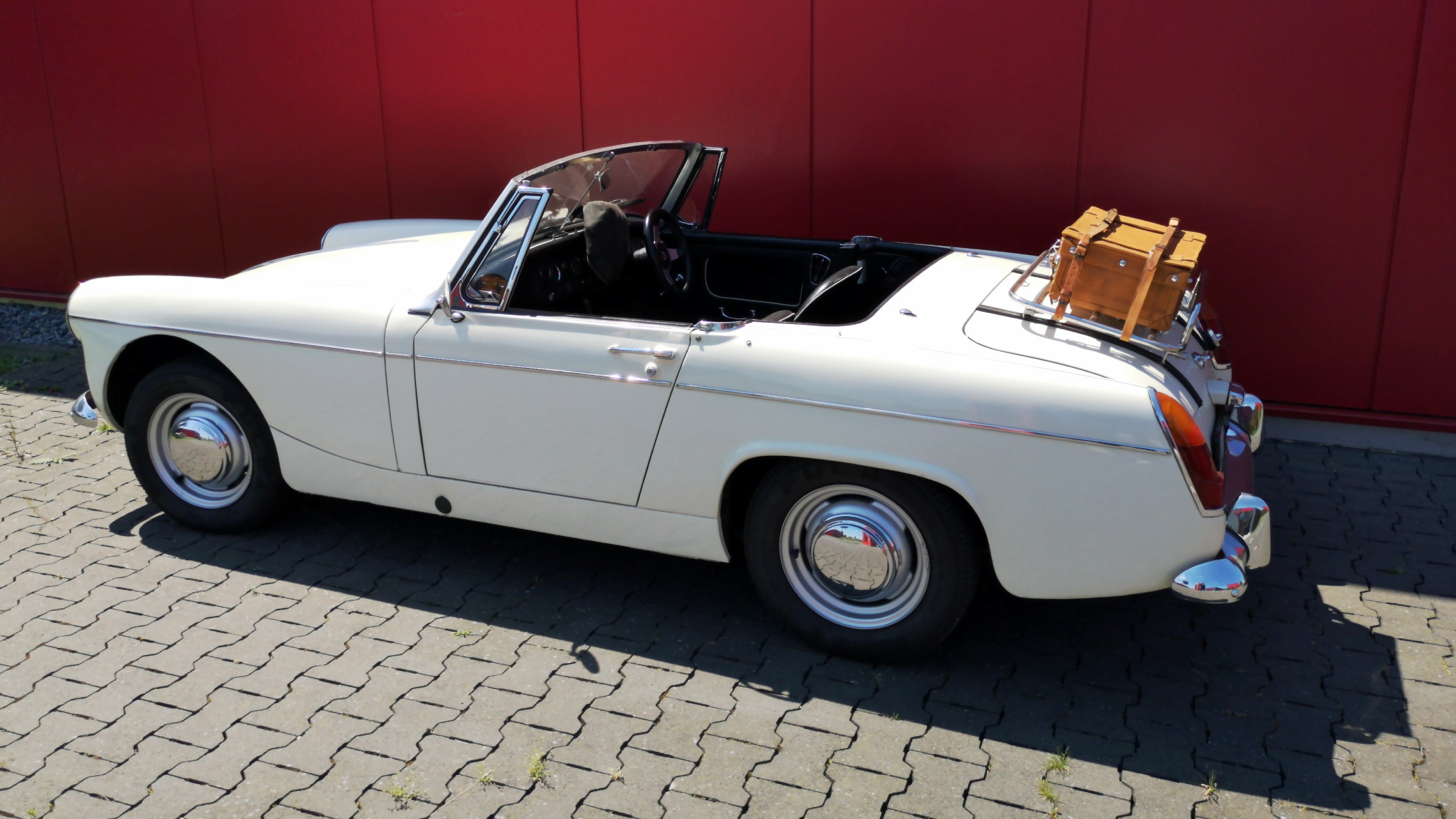
This August sees the return of Salon Privé, one of the UK’s most stylish automotive events, featuring some of the finest supercars and classic cars in the world.
For collectors and enthusiasts, cars are more than just vehicles - they’re passion projects, investments, and pieces of history. Whether you own a few prized classics or a large, diverse collection, proper storage and protection is essential to preserving their value and legacy.
As experts in high-value car risk management and with Aviva Private Clients presenting this year’s Salon Privé Concours, Stephen Wilkinson, Head of Risk Management (South) for Aviva Private Clients, has pulled together the ultimate check list for beginners and more experienced collectors alike, to help safeguard your classic car collection.
A beginner’s guide to storing and protecting classic and high value vehicles:
1. Store key properly
Keys provide direct access to one of your most valuable assets, so implementing high-security key management systems - such as electronic key cabinets or even a safe - for both vehicle and garage keys is essential to deter theft. Additionally, using a Faraday bag can help protect against keyless entry hacking via electronic fobs. If any of the vehicles have a tracker and/or immobiliser fitted, it’s worth ensuring that all relevant subscriptions are up to date and active.
2. Use your vehicle regularly and prepare it for extended periods of storage if you don’t
To keep your car in good condition, it's important to drive it at least every few weeks. This helps maintain engine lubrication, keeps the battery charged (if applicable), and prevents general wear and tear. Regular use also makes it easier to spot any maintenance issues early on.
If you plan to store your car for an extended period, it’s important to prepare it properly. This includes treating or draining the fuel and maintaining or disconnecting the battery if needed. Any vehicle in storage will also need thorough cleaning and waxing, as well as breathable car covers to protect it from dust, moisture and pests while in storage. It’s also important to think about a climate-controlled environment, which can help prevent rust, mould and paint fading.
Should a car battery trickle charger be used, make sure it is of a high quality and meets appropriate standards to ensure reliability and good safety.
3. Think about your car’s individual needs
With growing interest in electric classic cars, it’s important to think about the different risks associated - such as charging points - which present an increased fire risk.
All associated electrical circuits must be purpose-built and capable of handling the required load. These circuits should be dedicated solely to vehicle charging and must never be shared with other equipment or extended using additional cables. Fire alarm systems should also be interfaced with the power supply to automatically cut power to the charges in the event of an alarm activation. Regular and professional electrical checks are also a good way to check systems are functioning as expected.
4. Maintain your garage or storage facility properly and conduct vehicle maintenance works elsewhere
Keep your garage in good condition through regular building upkeep, ensuring that systems such as boilers, electrics, security, and fire protection are routinely serviced by trusted professionals. Pay particular attention to the roof’s integrity to prevent leaks and water damage.
Avoid carrying out vehicle maintenance or repairs within the storage space as oil, grime and fuel can compromise the safe storage of your car, as well as being a fire hazard. Instead, use a specialist garage or workshop experienced in handling high-value or classic vehicles to ensure your car receives expert care in a secure environment.
5. Maintain important documents and store them safely
For collectors, documentation is part of the car’s story and its value, so it’s worth maintaining an archive of original manuals, repair and service history and photographs (historical and recent). Not only are these essential for supporting any future insurance claims, they can also help verify the authenticity of parts, potentially enhancing the car’s value. For added protection, consider storing these documents securely off-site.
6. Ensure you have the right insurance for your vehicle
Securing the right insurance is essential to protecting your valuable vehicle against risks such as theft, accidents, fire, or flooding. Ensuring you also have the right level of cover is particularly important, as underinsurance could lead to significant financial loss, especially when it comes to repairing or replacing a large collection.
A collector’s guide to storing and protecting classic and high value vehicles:
1. Consider storing collections separately
If you own a large car collection, consider storing vehicles across multiple locations. This approach helps mitigate risk, ensuring that in the event of an incident such as theft, fire, or flooding at one site, your entire collection is not compromised.
2. Store cars in a secure garage or facility with proper security measures in place
High-value cars should always be stored in a secure, enclosed garage or storage facility, reflecting the value of the owner’s collection.
From a practical point of view, it should have good physical protections such as locks, with restricted access to trusted and vetted individuals.
The unit should also have a professionally installed intruder alarm system, connected to an alarm receiving centre, to ensure an immediate response in the event of a break-in. The system should include magnetic contact sensors on external doors and windows, break glass detectors, and interior infrared motion sensors.
Additional security enhancements may include internal and external CCTV systems, as well as anti-ram bollards at vehicle access points. If your own garage or private storage facility has windows, you could consider installing blinds or coverings to prevent vehicles from being visible from the outside.
3. Install fire alarms and suppression systems
Fire safety is just as critical as theft prevention. As with intruder alarms, fire alarm systems should be installed by a reputable, accredited provider and connected to an alarm receiving centre. Where possible, fire suppression systems - such as sprinklers - should be installed, and appropriate fire extinguishers should be kept on site. These should include inert gas extinguishers as an alternative to fine powder, and extinguishers specifically designed for lithium-ion battery fires, particularly when electric vehicles are stored.
4. Give your cars plenty of space
If storing multiple vehicles in the same space, ensure there is adequate space between them and plan for how each vehicle would be removed in an emergency, such as a fire, prioritising those that are most valuable or at highest risk. Vehicles stored on mezzanine levels accessible only by car lifts, should be of lower value for example, as emergency removal may not be possible in such locations.
It could also be a good idea to create a salvage plan to ensure the highest value vehicles are removed first, and that there is good fire prevention infrastructure in place. Any hazardous materials on site must also be managed appropriately, and if the value of the collection warrants it, it’s worth coordinating with local fire services for access, water sources, and utility shutoffs.
5. Integrate security systems with other monitoring devices
Consider integrating your fire and security systems with additional monitoring technologies, such as water flow or leak detection sensors, and installing a backup generator to maintain functionality during power outages. This ensures you’ll receive alerts for any incident that could pose a risk to your vehicle.
6. Ensure you have the right insurance for your vehicle
Securing the right insurance is essential to protecting your valuable vehicle against risks such as theft, accidents, fire, or flooding. Ensuring you also have the right level of cover is particularly important, as underinsurance could lead to significant financial loss, especially when it comes to repairing or replacing a large collection.
Aviva Private Clients, offers agreed value cover under specific conditions, meaning the insured value of your vehicle is pre-agreed between you and Aviva. This provides peace of mind knowing your car is insured for its true worth, allowing you to enjoy your car without concern for unexpected risks or financial setbacks.
-ends-
Enquiries:
Amy Penn
General Insurance
-
Phone
-
+44 (0) 7385 011200
-
-
Email
Notes to editors:
- We are the UK's leading diversified insurer and we operate in the UK, Ireland and Canada. We also have international investments in India and China.
- We help 25m+ customers (including Direct Line) make the most out of life, plan for the future, and have the confidence that if things go wrong we’ll be there to put it right.
- We have been taking care of people for more than 325 years, in line with our purpose of being ‘with you today, for a better tomorrow’. In 2024, we paid £29.3 billion in claims and benefits to our customers.
- In 2021, we announced our ambition to become Net Zero by 2040, the first major insurance company in the world to do so. While we are working towards our sustainability ambitions, we recognise that while we have control over Aviva’s operations and influence over our supply chain, when it comes to decarbonising the economy in which we operate and invest, Aviva is one part of a far larger global system. Nevertheless, we remain focused on the task and are committed to playing our part in the collective effort to enable the global transition. The scope of our Climate ambitions and the risks and opportunities associated with our Climate strategy are set out in our Transition Plan published in February 2025: www.aviva.com/sustainability/taking-climate-action. Find out more about our sustainability ambition and action at www.aviva.com/sustainability
- Aviva is a Living Wage, Living Pension and Living Hours employer and provides market-leading benefits for our people, including flexible working, paid carers leave and equal parental leave. Find out more at www.aviva.com/about-us/our-people/
- As at 30 June 2025, total Group assets under management at Aviva Group were £419 billion and our estimated Solvency II shareholder capital surplus was £8.1 billion. Our shares are listed on the London Stock Exchange and we are a member of the FTSE 100 index.
- For more details on what we do, our business and how we help our customers, visit www.aviva.com/about-us
- The Aviva newsroom at www.aviva.com/newsroom includes links to our spokespeople images, podcasts, research reports and our news release archive. Sign up to get the latest news from Aviva by email.
- You can follow us on:
- X: www.x.com/avivaplc/
- LinkedIn: www.linkedin.com/company/aviva-plc
- Instagram: www.instagram.com/avivaplc
- For the latest corporate films from around our business, subscribe to our YouTube channel: www.youtube.com/user/aviva
















